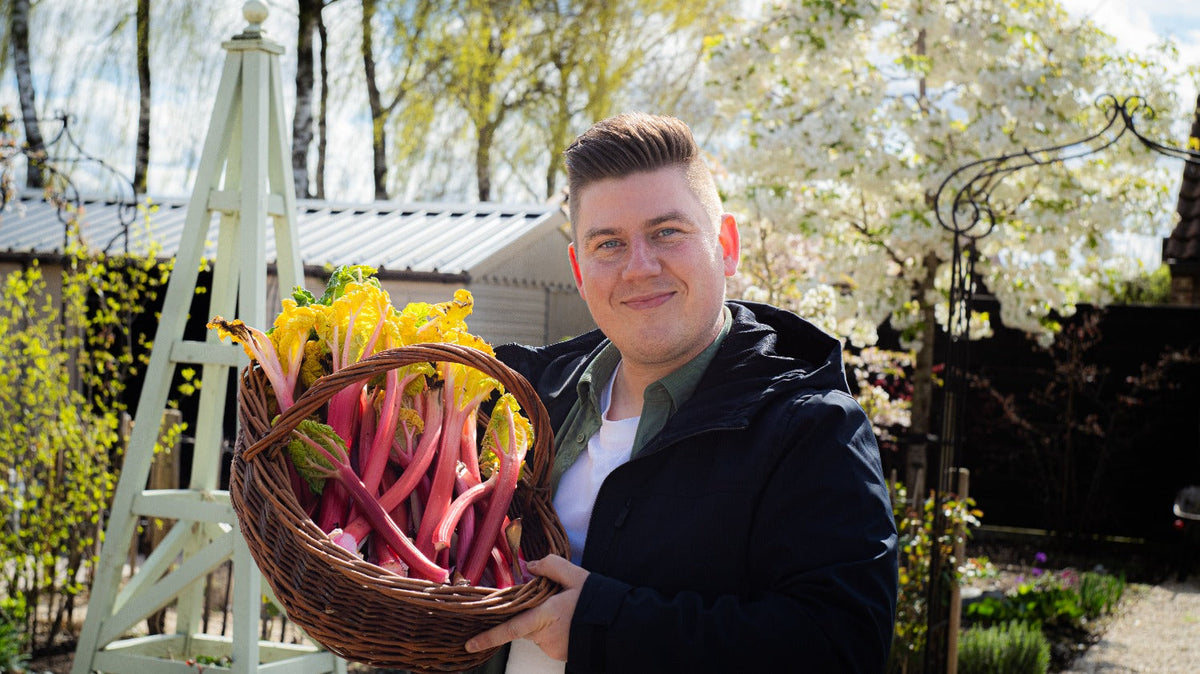
Rhubarb bleaching in the vegetable garden: a sweeter harvest thanks to this simple trick
|
Tijd nodig om dit artikel te lezen: 2 min
|
Tijd nodig om dit artikel te lezen: 2 min
Ever heard of bleaching rhubarb? No? Then it's high time you get to know it! It's a bleaching method that came over from England centuries ago and is considered a delicacy today. But how do you bleach rhubarb? And what are the benefits? You can read all about it below.
Bleaching vegetables is nothing new. The most well-known vegetable that is bleached is chicory. The bleaching process mainly ensures a milder taste. Because rhubarb is quite sour, you can influence the taste by shielding the plant from sunlight. Then the stems are slightly less sour and even a bit sweeter. Bleaching rhubarb and, for example, sea kale, has come over from England. There, the so-called bleaching pots or bells have been a thing in the vegetable garden for years.
When rhubarb starts to grow in March, it is the ideal time to start. The principle is simple. You want to keep the plant in the dark. And you do that with so-called bleaching bells or - if you don't have them - with a terracotta pot. You then place the bell or pot upside down over the plant and wait. After about four weeks without sunlight you will see the result. You can loosen the bleached rhubarb stalks, which are light pink and red, with a twisting movement. Do not use a knife, that is not necessary.
Did you know that we also have a well-stocked YouTube channel? With over 450 videos, we have a large database of information. Be sure to check out YouTube and subscribe, so you can stay up to date with the latest videos.
In this video, Angelo shows you step by step how to bleach rhubarb for a sweeter taste.
The bleached stalks of rhubarb are light pink with red and still a bit sour, but much milder in taste. Super tasty to make rhubarb crumble pie or jam . Can you repeat the process? In theory yes, but experience has taught us that it is better to leave the plant alone afterwards and just let it do its thing. The more often you repeat this bleaching process, the weaker the plant will become . See it as a temporary delicacy of spring, just like asparagus is only available in limited quantities if you want to eat it according to the seasons.
After the bleaching process, it is better to leave the plant alone for a while, you know that by now. But does that mean that you can't pick from it later? Absolutely not! When the plant has had a chance to catch its breath and is growing well, you can start picking the stems regularly again. Although it is done for this year after June 21. After the longest day of the year, leave the plant alone again, so that it can continue to grow and absorb nutrients without worries for the rest of the summer. The healthier the roots, the better the harvest next year.



